|
Once Upon a Time in
Kiddie Lit
by Bob Brooke
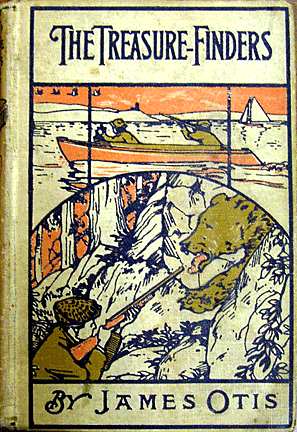 There’s
nothing so captivating as seeing a child’s face light up as they open
their favorite book. Children, even more than adults, read and reread
their favorite books. As these same children grow into adulthood, some
long for their favorite children’s books. And these are the ones who
become avid children’s book collectors. There’s
nothing so captivating as seeing a child’s face light up as they open
their favorite book. Children, even more than adults, read and reread
their favorite books. As these same children grow into adulthood, some
long for their favorite children’s books. And these are the ones who
become avid children’s book collectors.
Although children's books have always been collected, it’s only within
the last ten years that they have grown popular among book collectors.
Generally, children’s book collectors fall into two categories–those who
remember their favorite childhood book characters and those who prefer
something unusual about the books, such as illustrations, size, shape,
or topic. Some collectors choose a favorite book, such as Treasure
Island, and collect every edition published while others collect works
by a single author or illustrator.
Children's books are probably the most popular form of collectible
illustrator art. For centuries, children began learning to read with the
alphabet and the Lord's Prayer. Known as horn books for the thin sheet
of horn that protected the printed alphabet from which the child would
learn to spell out letters and words, these books were strictly for
education and not entertainment.
A Brief History of Children’s Books
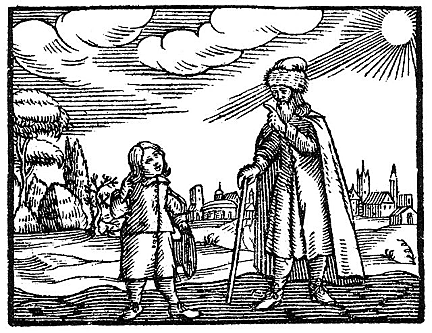 The
history of illustrated children’s books for entertainment dates back to
the early 17th century with the publication of Orbis Pictus, a
book filled filled with woodcuts of people at play and other interesting
objects to encourage a child to read. A few London printing houses began
to specialize in children's literature, emphasizing "highly moralistic
tales." But more exciting adventure classics such as Gulliver's
Travels and Robinson Crusoe made their appearance. In 1807,
Catherine Dorset wrote The Peacock at Home, which sold more than
4 million copies in 12 months. And, by the 1820s Old Mother Hubbard
and The Tale of Cock Robin had both been mass-produced in
hand-colored editions. The
history of illustrated children’s books for entertainment dates back to
the early 17th century with the publication of Orbis Pictus, a
book filled filled with woodcuts of people at play and other interesting
objects to encourage a child to read. A few London printing houses began
to specialize in children's literature, emphasizing "highly moralistic
tales." But more exciting adventure classics such as Gulliver's
Travels and Robinson Crusoe made their appearance. In 1807,
Catherine Dorset wrote The Peacock at Home, which sold more than
4 million copies in 12 months. And, by the 1820s Old Mother Hubbard
and The Tale of Cock Robin had both been mass-produced in
hand-colored editions.
The publication of Charles Kingsley's Water Babies in1863 marked
the beginning “modern” fantasies for children. The 1860s brought to
publication such children’s classics as Lewis Carroll’s Alice’s
Adventures in Wonderland and Louisa May Alcott’s Little Women.
And Mary Mapes Dodge published her book, Hans Brinker and the Silver
Skates, in 1865.
As the next decade dawned, Anna Sewell saw her Black Beauty, the
Autobiography of a Horse, published. Lewis Carroll published the
Through the Looking Glass, the sequel to Alice’s Adventures in
Wonderland. And Mark Twain published The Adventures of Tom Sawyer,
the book that catapulted him to notoriety.
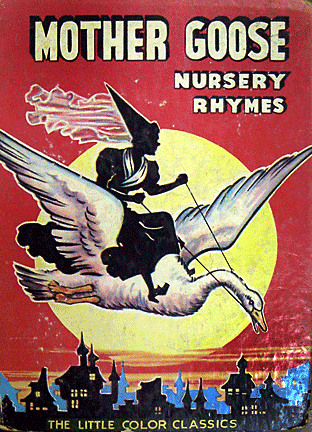 In
1881, Joel Chandler Harris published Uncle Remis His Songs and
Sayings, followed in 1883 by the Merry Adventures of Robin Hood
by Howard Pyle. Also, in that same year, an Italian children’s book,
Avventure Di Pinocchio by Carlo Collodi, was translated into
English. Another translation, Heidi by Johanna Spyri, a
two-volume set, came on the American scene in 1884. In
1881, Joel Chandler Harris published Uncle Remis His Songs and
Sayings, followed in 1883 by the Merry Adventures of Robin Hood
by Howard Pyle. Also, in that same year, an Italian children’s book,
Avventure Di Pinocchio by Carlo Collodi, was translated into
English. Another translation, Heidi by Johanna Spyri, a
two-volume set, came on the American scene in 1884.
By 1891, Maud Humphrey had managed to write and illustrate her book,
Mother Goose, while Rudyard Kipling was working on his Jungle
Book which came out in 1894. The 1890s also saw Robert Louis
Stevenson publish his Child's Garden of Verses, illustrated by
Charles Robinson. But the book that captured the hearts of children
everywhere was The Story of Little Black Sambo by Helen
Bannerman, published in 1899.
Children’s Books of the 20th Century
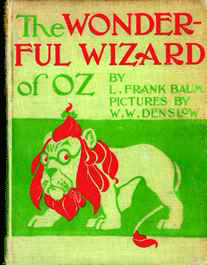 The
new century opened with The Tale of Peter Rabbit by Beatrix
Potter, who had it printed herself before a London publishing house
published it in 1902. And who can forget The Wonderful Wizard of Oz
by L. Frank Baum, the best-known American children’s fantasy. The
new century opened with The Tale of Peter Rabbit by Beatrix
Potter, who had it printed herself before a London publishing house
published it in 1902. And who can forget The Wonderful Wizard of Oz
by L. Frank Baum, the best-known American children’s fantasy.
The first decade alone produced such classics as Peter Pan in
Kensington Gardens, illustrated by Arthur Rackham, Anne of Green
Gables by L.M. Montgomery, and The Wind in the Willows by
Kenneth Grahame.
The second decade brought with it more Peter Pan adventures in Peter
and Wendy, illustrated by J.M. Barrie, as well as Secret Garden
by Frances Hodgson Burnett. By 1916, Fairy Tales by Hans
Andersen, illustrated by Harry Clarke hit the bookshops, and the first
Raggedy Ann Stories by Johnny Gruelle appeared in 1918.
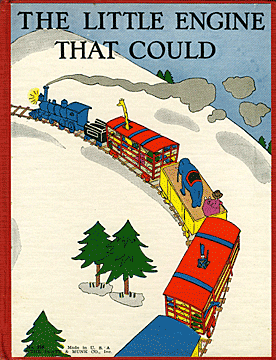 After
a time out for World War I, children’s book production continued with a
exciting decade of hits, including The Story of Doctor Doolittle
by Hugh Lofting, The Velveteen Rabbit by Margery Bianco,
Winnie the Pooh by A.A. Milne., and finally in 1928, Bambi by
Felix Salten. After
a time out for World War I, children’s book production continued with a
exciting decade of hits, including The Story of Doctor Doolittle
by Hugh Lofting, The Velveteen Rabbit by Margery Bianco,
Winnie the Pooh by A.A. Milne., and finally in 1928, Bambi by
Felix Salten.
Some of the greatest modern classics books which are still popular today
appeared in the 1930s, beginning with The Little Engine That Could
by Watty Piper, followed by The Adventures of Mickey Mouse Book 1
by the Disney Studios in 1931. Laura Ingalls Wilder published her book,
Little House in the Big Woods, in 1932. Soon after Mary
Poppins by P.l. Travers and The Hobbitt by J.R.R. Tolkien
made their debut in bookstores. Finally, Madeline by Ludwig
Bemelmans thrilled little girls in 1938, as much as it does today.
World War II had a disastrous affect on children’s book publication. The
1940s saw few real classics being produced. But by the 1950s, the world
and the children’s book industry had recovered and in 1952
Charlotte's Web by E.B. White saw publication, followed by Eloise
by Kay Thompson in 1955.
The Children’s Book Illustrator
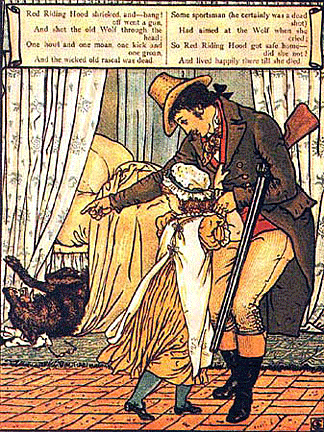 An
illustrator can, by the magic of color and line, transport children into
his/her own version of the world, in the same way that an author can by
the spell of his/her words. Illustrations can make or break a children's
book. What would Winnie the Pooh be without Ernest Shepard's
illustrations, or Mary Poppins without his daughter Mary's
drawings? Our view of Pooh and the rest is forever that of their
original artist. Adults see Alice as did the artist who illustrated the
first copy of Wonderland they read as children. An
illustrator can, by the magic of color and line, transport children into
his/her own version of the world, in the same way that an author can by
the spell of his/her words. Illustrations can make or break a children's
book. What would Winnie the Pooh be without Ernest Shepard's
illustrations, or Mary Poppins without his daughter Mary's
drawings? Our view of Pooh and the rest is forever that of their
original artist. Adults see Alice as did the artist who illustrated the
first copy of Wonderland they read as children.
The brothers Grimm introduced their fairy tales from 1812 to1815. What
made these books so marvelous were their illustrations by some of the
most noted illustrators such as George Cruikshank, Arthur Rackham, John
R. Neill, Johnny Gruelle, and Jesse Wilcox Smith, all of whom
illustrated the English versions.
After the black and white dullness of the middle 1860s, British
illustrators led a color revival in the industry introducing such
prominent artists as Randolph Caldicott, Kate Greenaway, and Walter
Crane. The Golden Age of children's books continued until around 1930.
It was during the years of 1840 to 1924 that the contributions of
American illustrators such as Thomas Nast, Palmer Cox, and Howard Pyle
made their appearances.
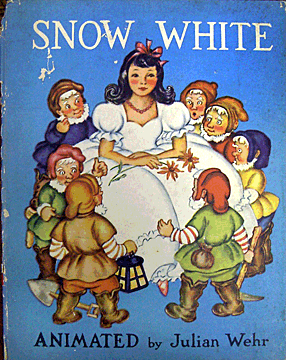 The
picture book per se is a particularly child-centered and relatively
modern side of book illustration–an integral combination of text and
picture, sometimes by the same person and sometimes by the collaboration
of writer and illustrator. The
picture book per se is a particularly child-centered and relatively
modern side of book illustration–an integral combination of text and
picture, sometimes by the same person and sometimes by the collaboration
of writer and illustrator.
The craftsmanship and the materials that went into producing children’s
picture books
goes way beyond the mass-produced ones of today. From around 1860 into
the early 1900s, publishing houses lavished attention on beautifully
bound cloth books with gilt decorations, bright full color paste-ons,
and tipped-in color plates illustrated and written by talented artists.
They were and still are works of art.
Children's book publishing divides the market into five main groups
according to age. The Board Books and other books for the babies and
toddlers; ages 4-8, the picture book age but also includes easy readers
like the extra special The Cat In the Cat; ages 8-12 fiction and
nonfiction; and ages 12 up also called young adult.
<
More Special Features
Next Article > |
